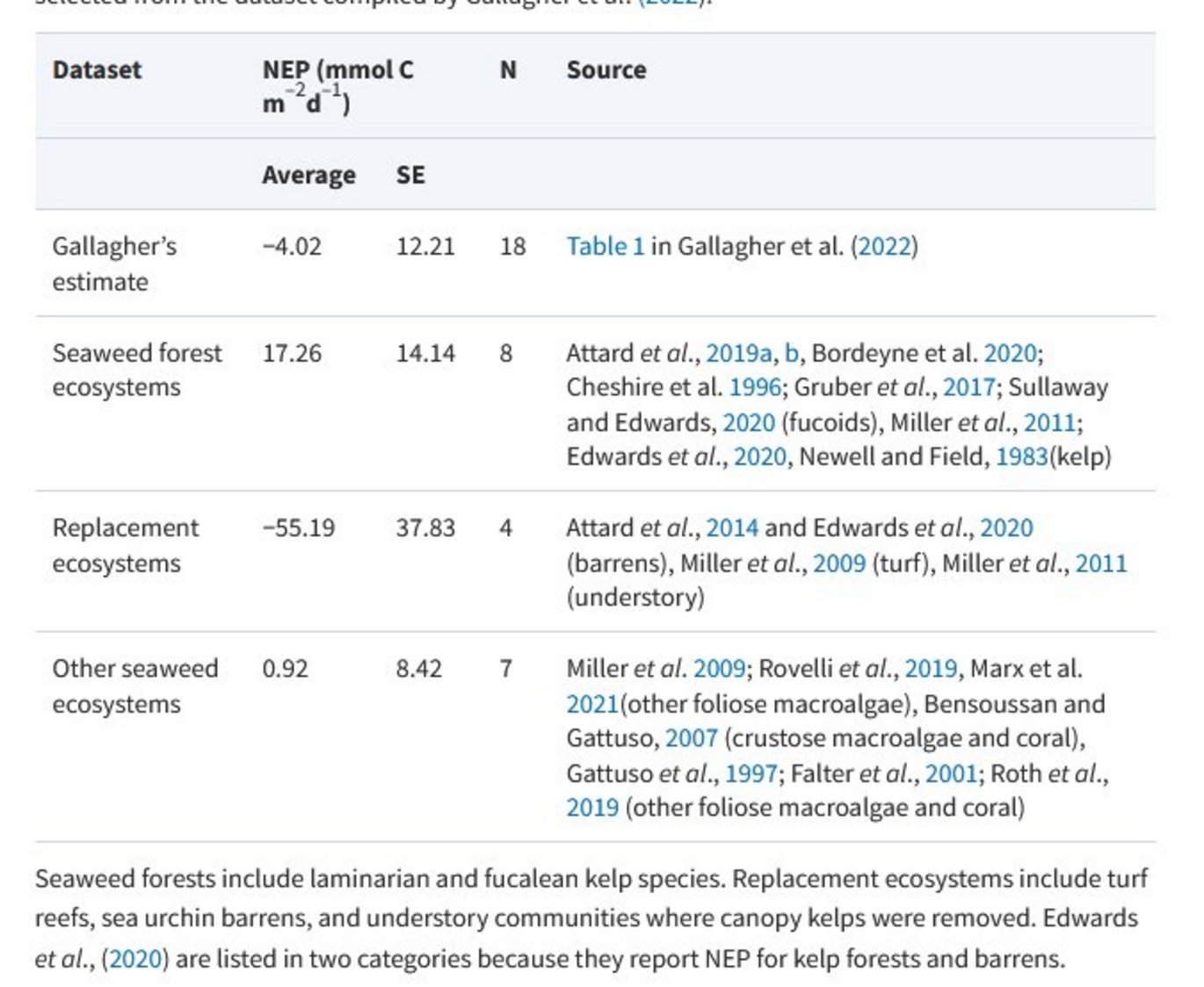Seaweed forests are carbon sinks that may help mitigate CO2 emissions: a comment on Gallagher et al. (2022)
New publication by Filbee-Dexter K, Pessarrodona A, Duarte CM, Krause-Jensen D, Hancke K, Smale D et al.

Abstract:
Recently, Gallagher et al. (2022) suggested that seaweed ecosystems are net heterotrophic carbon sources due to CO2 released from the consumption of external subsidies. Here we outline several flaws in their argument, which we believe confuse research on the blue carbon potential of seaweed ecosystems, and unjustifiably generate doubt around initiatives to protect and restore seaweed forests. Gallagher et al.’s evidence relies on 18 studies with highly variable measures of net ecosystem production, which do not statistically support their conclusion that most seaweed ecosystems are heterotrophic. This dataset is also inappropriate as it is incomplete and misrepresents seaweed ecosystems globally, particularly seaweed forests, which contribute disproportionately to global seaweed productivity. We maintain that the climate change mitigation value of an ecosystem depends on the net difference in CO2 uptake between the original ecosystem and its replacement ecosystem. We provide evidence that most seaweed ecosystems, which drawdown the largest carbon flux of any vegetated coastal habitat, are indeed net autotrophic ecosystems. We recognize that substantial uncertainties remain concerning the magnitude of CO2 drawdown by seaweed ecosystems and recommend that carbon fluxes around seaweed ecosystems should be considered more broadly and taken into account in estimates of their CO2 mitigation potential.
